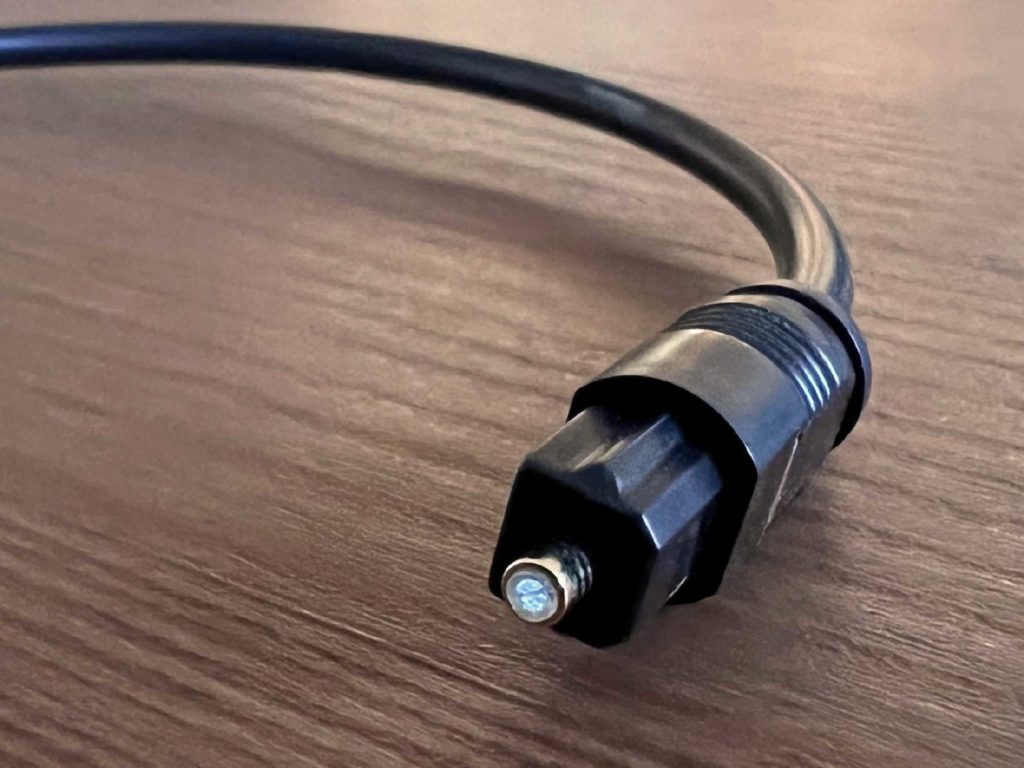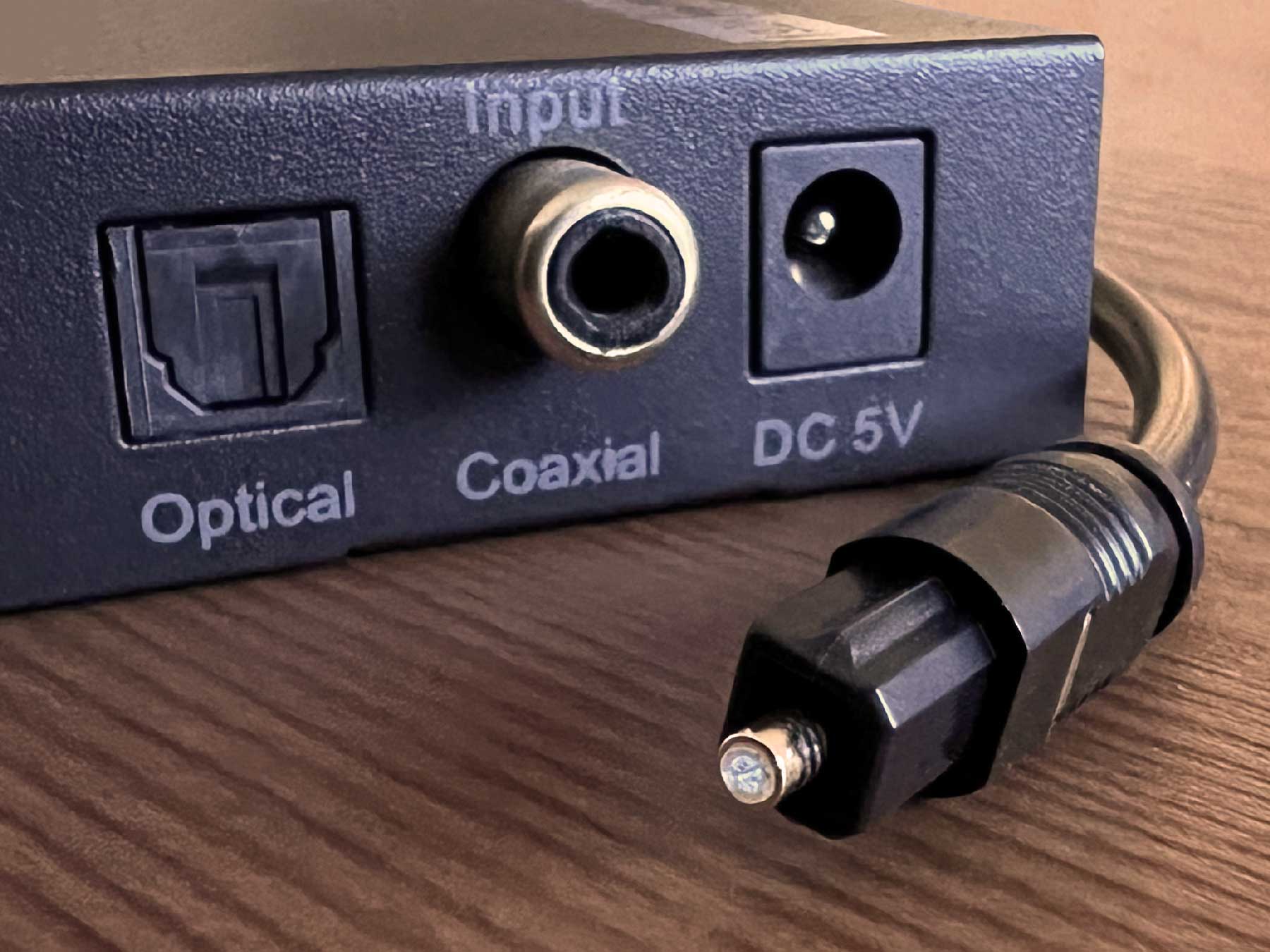What is Optical Audio?
Optical audio or TOSLINK (Toshiba Link) is a fiber optic system used for sending digital audio in the form of light (pulse code modulated audio). You’ll commonly see optical audio as an option in consumer electronics like televisions, gaming consoles, or DVD / Bluray players for sending audio. The devices will have an optical audio socket sometimes called a digital optical socket. A special optical audio cable is required to connect to this socket and a receiver, speaker, or device that decodes the light signal back into digital audio.

Advantages of Optical Audio
Optical audio was developed as a lossless audio option for two channel digital audio. It is capable of sending compressed 5.1 / 7.1 surround sound (Dolby Digital or DTS). Optical audio has the advantage of being resistant to external factors such as electrical interference or electromagnetic noise unlike traditional copper wires and cables. Optical audio is also capable of preventing the degradation of signal / sound over long distances as it does in copper wires. This is similar to why fiber optics are beginning to replace traditional coaxial cables for television and internet. Fiber optic cables offer low signal loss and high data rates compared to traditional copper or coax cables.
Disadvantages of Optical Audio
Optical audio was first designed in 1983. Since then other technologies have come out such as HDMI (designed in 2002) which offer better audio quality and more bandwidth for higher quality audio and video. HDMI is a better choice for tv and home surround sound setups. HDMI can carry newer lossless versions of digital audio that require more than two channels of pulse code modulated (PCM) audio. Another disadvantage of optical audio is that plastic optical cables can be brittle and have limitations on distance. The plastic optical cables can be damaged if they’re too tightly wound up or bent, and the range of plastic cables is limited to around 10 meters. An alternative is a glass or silica optical fibers for extended range however these cables are much more expensive.
